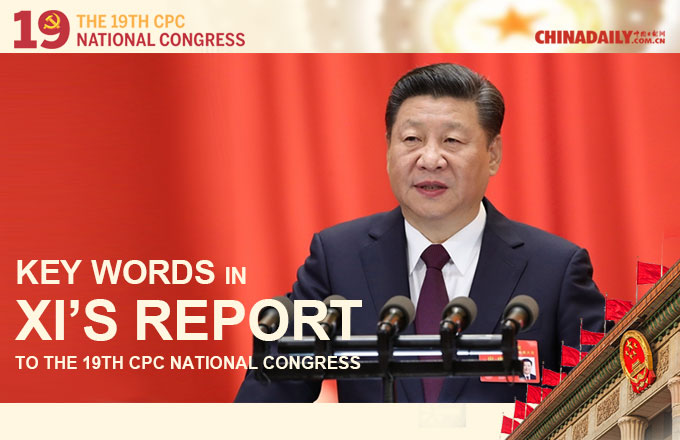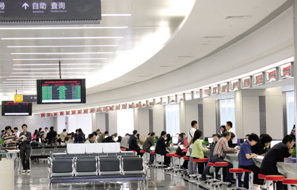China's development good experience to share
Editor's note: Ben Bingham, Asian Development Bank's country director for China, has shared his views with China Daily's Wu Zheyu on China's developments and the country's contribution to the global governance.
Can you summarize the greatest achievements of the Chinese government and the Asian Development Bank in the past five years?
Last year, 2016, was definitely one of the highlights of ADB's engagement with China over the past five years. In that year we celebrated the 30th anniversary of China joining the ADB and the rich contribution of this partnership to China's extraordinary economic development since 1986. As important, we also finalized our Country Partnership Strategy (2016 - 2020), which laid out our support for the government's economic strategy under the 13th Five Year Plan.
That strategy has four strategic priorities: helping the government management climate change and the environment, in order to realize the goal of an ecological civilization; promoting regional cooperation and integration, an obvious priority in light of the Belt and Road Initiative; supporting inclusive economic growth to assist China to sustainably reduce poverty and better manage vulnerability; and supporting institutional cooperation and governance reform, to make the public sector and markets work better. This strategy will be supported by a sovereign lending program expected to rise up to $2 billion per year, reflecting ADB's continued commitment to China's sustainable development goals.
How do you rate China's economic growth and business opportunities in the past five years? What is the biggest challenge it faces, and how can it overcome it?
One of China's greatest achievements over the past five years has been to maintain strong economic growth and stable economic conditions as the government sought to rebalance the economy and move towards a more innovative and sustainable economic growth model. This rebalancing was underpinned by the comprehensive reform agenda laid out in the Third Plenum of the 18th CPC Central Committee and subsequently incorporated into the 13th Five-Year Plan. With growth momentum secured, the policy focus has appropriately shifted more to addressing risks to financial stability.
The decisions made at the National Financial Work Conference to focus on mitigating financial risks were an important milestone in this regards. Beyond that, one of the biggest challenges that the government faces is how to find the right balance between government intervention and letting markets play a decisive role. Progress has been made over the past two years in important supply-side reforms, including reducing industrial excess capacity and the housing overhang. However, it is also broadly accepted that well-regulated and competitive markets are critical for increasing economic efficiency and productivity. This is exactly what China needs to achieve a high-income economy in the coming years.
What valuable experiences can China offer other regions and countries to boost their own development?
From its opening up in 1978 to 2016, China has achieved a consistent annual growth rate of almost 10 percent. This is a remarkable achievement. In addition, the fruits of this rapid growth were broadly shared. Although inequality has risen, living standards have increased tremendously, allowing substantial progress in reducing poverty. Over this period, China has managed to lift more than 800 million out of poverty.
Unsurprisingly, other countries are keen to learn from China's development experience, and the ADB is working closely with the government to help China share its development experience. A number of key lessons stand out: first is the clear vision of China's long-term strategic planning and its heavy commitment to infrastructure investment to modernize the economy; second, its willingness to open up its economy and experiment with reforms to develop the market system in China; thirdly a focus on ensuring that the growth was inclusive, and more recently, environmentally sustainable; and lastly that the reform process had a strong scientific basis, with a strong emphasis on "seeking truth from facts". These are all important lessons that China could offer other regions and countries.
Can you tell us a bit about the progress that has been achieved in projects co-financed by the Asian Infrastructure Investment Bank and the ADB?
The ADB has signed a memorandum of understanding with the AIIB (on May 2, 2016) to strengthen cooperation, including through jointly financing projects. We are both strongly committed to broadening our partnership in the spirit of collaboration. Indeed we both see much complementarity arising from our different mandates, comparative advantage and strategic focus. The AIIB will bring welcome financial and technical expertise to infrastructure development in the region. This will complement nicely ADB's broader mandate, which encompasses a broader economic and social sector engagement with countries in the region, which the ADB supports with concessional financing, where appropriate, and instruments like policy-based loans.
The ADB has already co-financed four projects with the AIIB. They are the M4 expressway development in Pakistan ($100 million was approved in June 2016, with an equal amount coming from the AIIB); a project to improve natural gas production and transmission in Bangladesh ($167 million was approved in November 2006, with $60 million from the AIIB); and a project to build a bypass road skirting the port city of Batumi, Georgia's second-largest city ($114 million was approved in March with finance of the same amount from the AIIB approved on June 15). On Sept 27, the ADB and the AIIB announced co-financing for additional power transmission lines to connect with the ADB's $1 billion Green Energy Corridor and Grid Strengthening Project in India. The ADB will provide $50 million, while the AIIB will provide $100 million for the new project components.



























